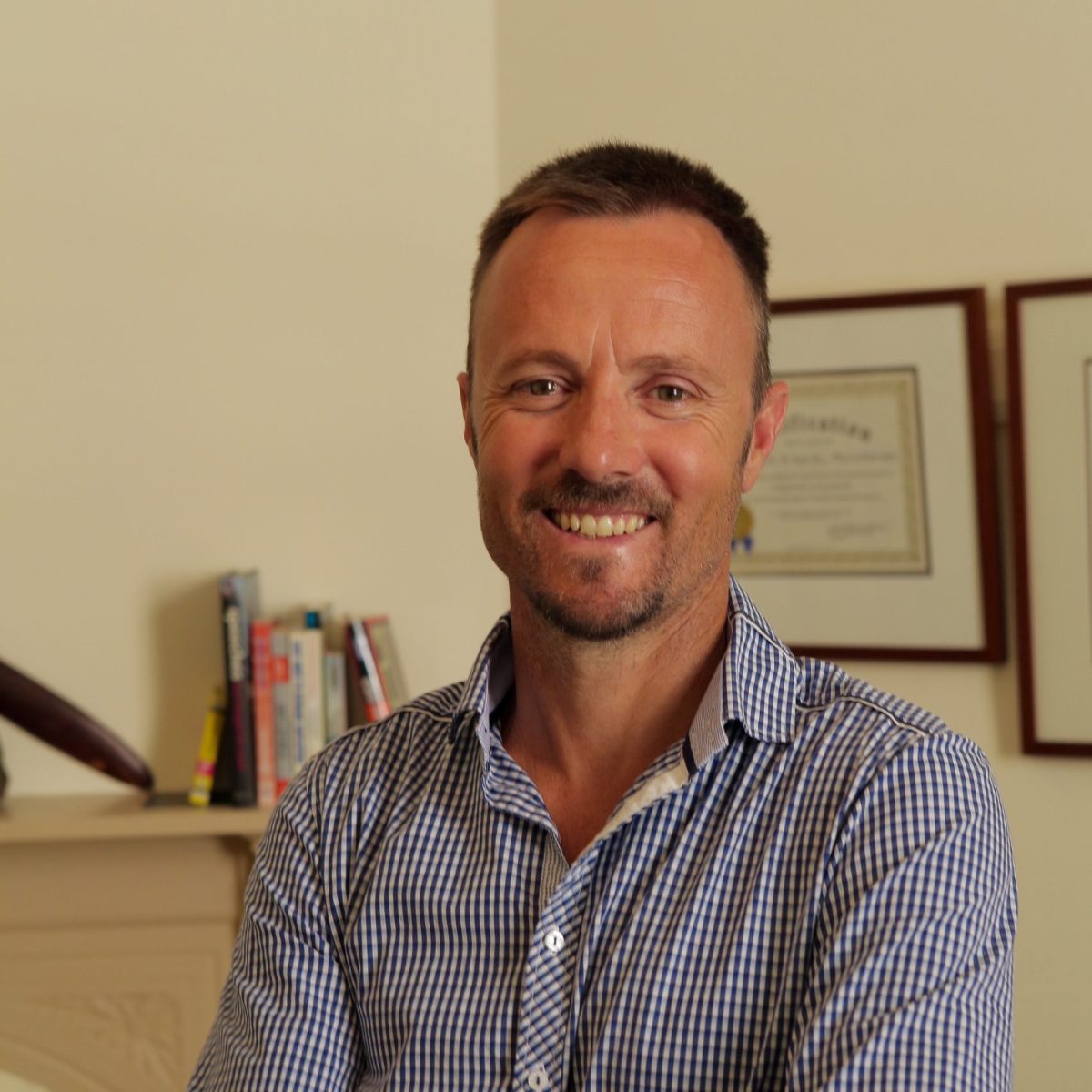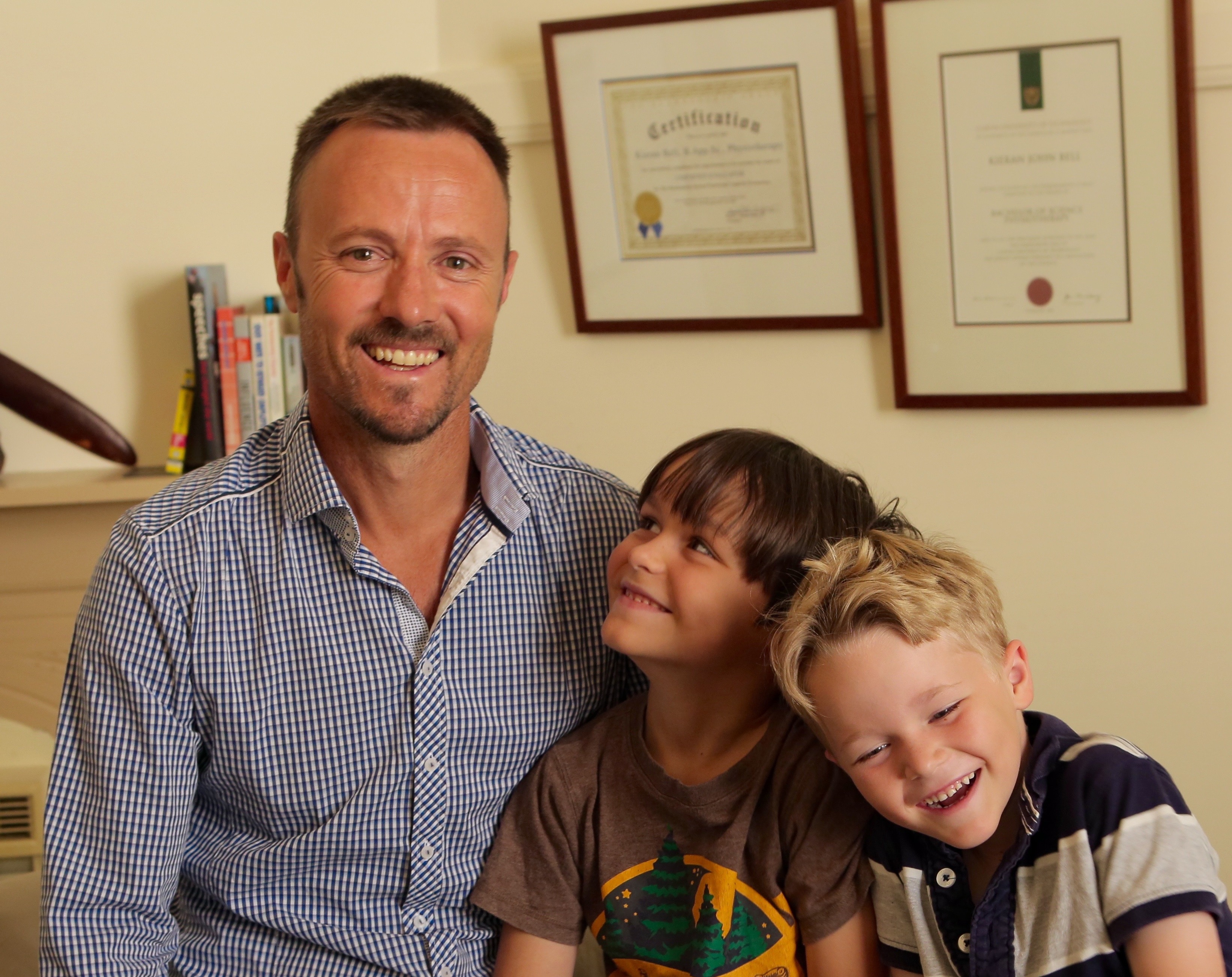
I’m Kieran Bell
I am a physiotherapist with 30 years of experience.
I have worked in many areas within physiotherapy and the one common denominator that has kept me engaged in my work is helping people navigate their challenges. Whether it is acute or chronic pain, loss of function, or lack of capacity to enjoy the things they love, helping people stay active, functional and injury free is where my focus is currently.
Of late I've been working in pain science. In 2018, I was recruited into the treatment group of one of the biggest and highest quality research trials ever done on low back pain called The RESTORE Back Pain Trial. This experience deepened my understanding and appreciation for the nuance and complexity of pain. Watching people gain confidence and build lasting trust in their body is fulfilling, and drives a lot of my practice at this point.
Two Worlds
I currently divide my time between two work fronts.

Working from my clinic in Fremantle, Mouat West Physiotherapy, I help anyone dealing with pain and work with them towards regaining meaningful function and building quality of life.

Working in industry with colleague and friend Kingsley Flett in Strong Spine, I consult with businesses in an occupational health role performing injury prevention and ergonomic risk management.
Both draw from a strong evidence base and come from an understanding of the factors that influence pain and lead to injury. Helping clients understand what drives their behaviour and how to build empowering habits.
My Methods
Cognitive Functional Therapy (CFT) – A progressive development on a psychosocial approach to recovery
Helping people navigate a pain experience of any timeframe or severity requires a person-centered, evidence-based approach. One that takes into account all the factors that can influence the pain we experience, not just the usual suspects; mechanical triggers like “too heavy” “too many reps” or “awkward posture”.
For an optimal recovery, we need to overcome the usual barriers – such as fear of movement, fear of damage, and pain avoidance.
Symptom management (Hands-on therapies)
To help get joint pain under control I use joint mobilisations, which are a gentle way of keeping synovial fluid (the good oil) moving and rinsing out noxious fluids that may be causing stiffness and pain. These accumulate after an injury or aggravation of an injury site.
For muscles, I like to use myofascial release and dry needling to stimulate fluid exchange at a cellular level and reduce unwanted tightness. These two therapeutic methods will feature for pain relief in most treatment plans I work on with my patients.
Without exception, I will aim to introduce some exercise components that you can work on at home. Homework (exercises) will be simple, specific, and low drag, that is, quick and easy to do.
Some Points I Have Found To Be Useful
- Movement is good for us in many ways, unless it seems to irritate things or make pain worse. When this happens we need to understand why and develop strategies that accommodate healing without flaring a pain state. Sometimes this means working with some pain.
- Age is not usually a factor except for the fact that we tend to heal slower as we age due to less regenerative hormones being active in our body. IF there is a call to action from this, it is that we should work more consistently in a more moderate fashion to maintain physical capacity into our 40s and beyond. Setting goals around valued activities and meaningful pursuits so it doesnt feel so much like work.
- When confronted with limits in what your body can tolerate in discomfort or activity level, try to be compassionate and patient and allow that state to persist in the short term. Then try to understand it from a functional perspective and work with it to accommodate any changes in your method, intensity or approach that may help overcome the issue or accept the limit as necessary for now. Be as curious as you can be about the process and try not to let negative self talk beat you down along the way.


